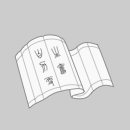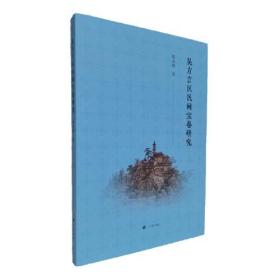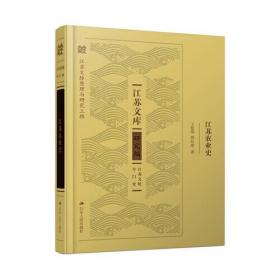
节水灌溉理论与技术(英文版)
¥ 34.1 5.9折 ¥ 58 全新
仅1件
山东泰安
认证卖家担保交易快速发货售后保障
作者刘俊萍、郑珍、王新坤、袁寿其 编
出版社江苏大学出版社
出版时间2021-09
版次1
装帧平装
货号604 11-21
上书时间2024-11-22
- 在售商品 暂无
- 平均发货时间 24小时
- 好评率 暂无
- 最新上架
商品详情
- 品相描述:全新
图书标准信息
- 作者 刘俊萍、郑珍、王新坤、袁寿其 编
- 出版社 江苏大学出版社
- 出版时间 2021-09
- 版次 1
- ISBN 9787568415811
- 定价 58.00元
- 装帧 平装
- 开本 16开
- 页数 176页
- 【内容简介】
- 节水灌溉是根据作物需水规律和当地供水条件,高效利用降水和灌溉水,以取得农业最佳经济效益、社会效益和生态环境效益的综合措施。正确认识节水灌溉的本质,具有较高的学术价值和现实意义。本书主要介绍节水灌溉的相关理论和技术,对于研究和推广节水灌溉技术具有十分重要的意义。本书为全英文书,具体内容包括节水灌溉基本理论、喷灌技术、滴灌技术、低压管灌技术、地面灌溉技术、沟灌技术、水稻灌溉技术、灌溉设备CFD数值模拟技术、粒子图像等PIV测量技术与水力性能、水肥一体化技术等。
- 【目录】
-
CHAPTER 1 Introduction
◎1.1 The Implications ofWater―saving Irrigation
◎1.2 Importance ofDeveloping Water.saving Irrigation
◎l.3 Overview and Prospects of Water―saving Irrigation Engineering Technology
1.3.1 Present situation in China
1.3.2 Present situation in foreign countries
1.3.3 Developmental trend of water..saving irrigation technology
CHAPTER 2 Basic Theory of Water―saving Irrigation
◎2.1 Crop Water Demand
2.1.1 The method of direct water demand calculation
2.1.2 A method of calculating actual crop water demand by calculatirrg referenced crop water demand
◎2.2 Crop Water Production Function
◎2.3 Irrigation Water Use Efficiency
◎2.4 Crop Irrigation System
◎2.5 Soil Water Model
CHAPTER 3 Sprinkler Irrigation Technology
◎3.1 Classification of Sprinkler Irrigation System
◎3.2 Components of Sprinkler Irrigation System
3.2.1 Sprinkler
3.2.2 Pump
3.2.3 Pipeline
3.2.4 Accessory equipment
◎3.3 Technical Parameters of Sprinkler Irrigation
3.3.1 Application rate of sprinkler irrigation
3.3.2 Water distribution characteristics
3.3.3 Uniformity of sprinkler irrigation
3.3.4 Droplet intensity
CHAPTER 4 Micro―irrigation Technology
◎4.1 Micro―irrigation System
4.1.1 Composition of micro--irrigation system
4.1.2 Types of micro-irrigation systems
4.1.3 Composition of a drip irrigation system
4.1.4 Function of the various components
4.1.5 Equipment for drip irrigation system
◎4.2 Micro Sprinkler Irrigation
4.2.1 Types of sprinkler systems
4.2.2 Design of sprinkler system
◎4.3 Micro―irrigation Technical Parameters
4.3.1 Factors considered in irrigation designing
4.3.2 Design of water consumption
4.3.3 Percentage of wetted soil area
4.3.4 Uniformity of irrigation water application
4.3.5 Irrigation water efficiency
4.3.6 Working pressure of dripper design
CHAPTER 5 Low.pressure Pipe Irrigation Technology
◎5.l Types and Composition of Low.pressure Pipeline Water Conveyance Irrigation System
5.l.1 Types of low―pressure pipeline water convevance irrigation system
5.1.2 Composition of 10w.pressure Dipeline water
conveyance irrigation system
◎5.2 Basic Requirements for Planning and LayOut 0f Water Distribution Pipeline Network
◎5.3 Advantages of Low―pressure Pipeline Water Conveyance Irrigation Engineering Technology
5.3.1 Water and energy saving
5.3.2 Save land and reduce labor
5.3.3 Expand the irrigation area
5.3.4 Prompt irrigation to increaseplloduction andincome
5.3.5 Strong adaptability and easy to manage
◎5.4 Layout of Pipe Network System
5.4.1 Ring pipe network
5.4.2 Dendritic pipe network
5.4.3 Mixed pipe network
◎5.5 Hydraulic Calculation of Low.pressureline
5.5.1 Design flow of irrigation svstem
5.5.2 Design ofwater head
5.5.3 The primary selection of pipe diameter and the hydraulic calculation of the pipe
CHAPTER 6 Surface Irrigation Technology
◎6.1 Introducfion of Surface Irrigation
6.1.1 Design principle of basin irrigation
6.1.2 Design principle of border irrigation
6.1.3 Design principle of~rrow irrigation
6.1.4 Water supply and management
◎6.2 Structural Elements
6.2.1 Diversion structures
6.2.2 Conveyance and management structures
6.2.3 Field distribution systems
CHAPTER 7 Channel Irrigation Technonlogy
◎7.1 Channel Irrigation System
7.1.1 Irrigation canal head works
7.1.2 Water conveyance and distribution system
7.1.3 Field irrigation system
7.1.4 Drainage channels
7.1.5 Venting area
◎7.2 Channel Seepage Prevention Technology
7.2.1 The significance and role of channel seepag-prevention
7.2.2 Type of channel seepage prevention
7.2.3 The section form of channel seepage preve
点击展开
点击收起
— 没有更多了 —












以下为对购买帮助不大的评价